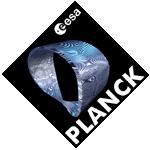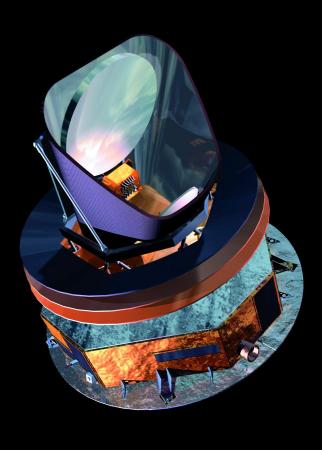
|
Planck-HFI activities at CITA |
|
Overview |
|
Home |
|
Technical |
|
Science |
|
Planck@CITA |
|
QLA |
|
Links |

|

|

|
|
Planck is an ESA Mission with support from NASA and the Canadian Space Agency. Planck will deliver highly sensitive maps of the total anisotropy and the polarization of the entire sky between 30 and 857 GHz. Planck is designed to image the anisotropies of the Cosmic Background Radiation Field over the whole sky, with unprecedented sensitivity and angular resolution. It will provide a major source of information relevant to several cosmological and astrophysical issues, such as testing theories of the early universe, the origin of cosmic structure and the physics of the interstellar medium. PLANCK will provide a definitive high-angular resolution mapping of the microwave background over the whole sky and over a wide frequency range. PLANCK has been designed to have 10 times the sensitivity and more than 50 times the angular resolution of the COBE satellite. |

|
|
The simultaneous mapping of the sky over a wide frequency range by PLANCK will permit a separation of Galactic and extragalactic foregrounds from the primordial cosmological signal to exquisite precision over much of the sky. PLANCK will operate in a survey mode, scanning the whole sky twice over in 12 months. High resolution (FWHM~5'-30') maps of the sky in 9 frequency bands in the range 30--1000 GHz will be made generally available within a year of the end of the survey, providing the community with all-sky data of unprecedented quality at frequencies that have hitherto been little explored. Planck is composed of two instruments: (1) the Low Frequency Instrument (or LFI) - an array of tuned radio receivers, based on HEMT amplifier technology, and covering the frequency range ~30 - 100 GHz; and (2) the High Frequency Instrument (or HFI) - an array of bolometers covering the frequency range ~100 - 850 GHz. Canada contributes both to LFI and HFI but the efforts at CITA are focussed on HFI. CITA is responsible for the development of the Quick Look Analysis software of HFI. CITA members are also active members of several Planck Science Working Groups on component separation, non-gaussianity, diffuse emission simulations and interstellar medium physics. |
|